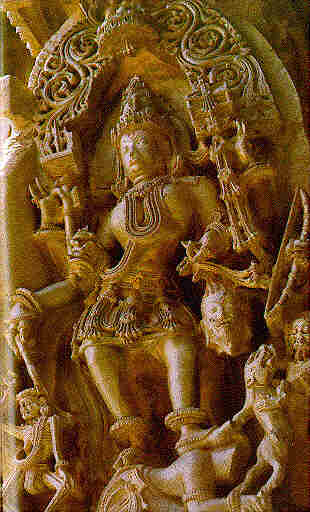|
Dear Visitor,
I welcome you to this non-profit, educational page. Here you will read about different aspects of the history and culture of that part of our globe which is known variously as Bharatvarsha, Hindostan or India. My approach of looking at history is that of a rationalist and humanist. As my aim is to spread awareness about history and culture, you may freely download this page, print it, link it up from your site, or mirror it at any server. Enjoy the infotainment laid out for you at this site. I also look forward to your valuable suggestions and feedback. Happy viewing.
Author
Hindu History
Chapter One : INDIA through the Ages
-The Coming of Feudalism in Post-Maurya Times
-By Shri Sudheer Birodkar
The Fall Towards Feudalism
 As described above, we find that in the post-Mauryan times, the geographical
spreading of farmlands over vast areas, due to which the jurisdiction of tax
collection was no longer limited to the tiny isolated Janapadas as in the
Mauryan times.
As described above, we find that in the post-Mauryan times, the geographical
spreading of farmlands over vast areas, due to which the jurisdiction of tax
collection was no longer limited to the tiny isolated Janapadas as in the
Mauryan times.
In the mediaeval ages many kings and feudal lords made generous donations to temples and temple construction. This is the reason for the rich opulent temples in the middle ages. Seen here is a statue of Shiva-Maheshwara at the Hoysaleshwara temple complex at Halebid in Karnataka. These temples date back to the 12th century C.E.
As long as the centralised apparatus of the Mauryan
state existed it could carry out the process of revenue collection but with the collapse of the empire and the disintegration of this centralised apparatus, this task became increasingly difficult. This created the necessity
for an intermediate class between the tillers of the widespread farmlands and the sovereign monarch. The extension of farmlands on a scale that seemed almost
limitless in those days along with the corresponding absence of a centralised tax collecting apparatus was one of the most important reasons for the emergence
of intermediaries and the rise of feudalism.
Author : Shri Sudheer Birodkar
|